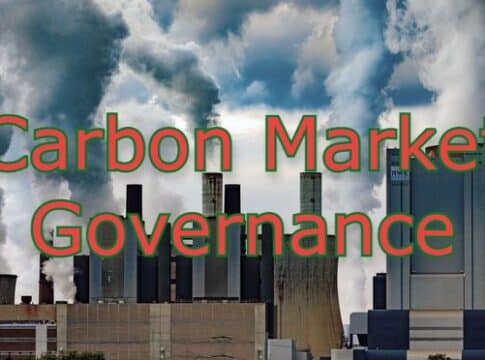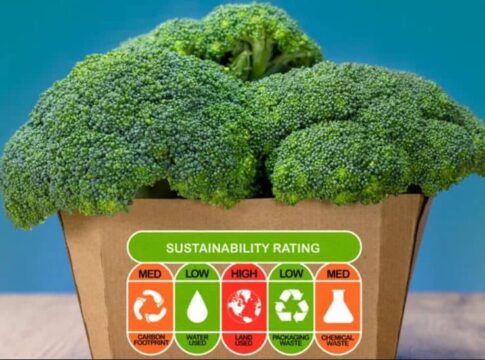Carbon Market Governance and Initiatives (The What, How, and Why)
Carbon credits market is a dynamic, complex system and so the pressure is high when it comes to its governance. But governing carbon markets can be tricky.
Upstream – credit buyers which are usually large firms are using the market to offset their own emissions.
Downstream – governments are imposing fees or rents from the sale of carbon credits.
Midstream – brokers and financiers facilitate the exchange between buyers and sellers with market securities.
And to top it all off, these dynamics play out in different layers from regions, nations, and international bodies.
Hence, governance frameworks and initiatives emerge to bring integrity and clarity in carbon market.
This article will identify what are the various governance bodies and initiatives that provide carbon credit quality guidelines and how they do it. It also explains why they encourage companies to pay more attention to carbon removal credits.
But before that, let’s bring more light to the context by explaining the rules of Article 6 of the Paris Agreement – where all governance came from.
The Article 6 Rules
After nations met in 2015 at Paris, they agreed on the guidelines for carbon market at COP26. This is what they call the Article 6 rules.
The rules allow countries to voluntarily cooperate with each other to hit their emission reduction goals. This means that they’ll be able to transfer carbon credits earned for reducing their own emissions to help others meet their targets.
In other words, entities from one country can buy the carbon credits generated by another country.
Under these rules, governments can decide the type of projects they can develop in their countries. They can also have control over whether to allow the emissions reductions from those projects.
As such, it will likely lead to further differences in approaches, credit types, and prices.
But the Article 6 rules also set strict guidelines to prevent double counting of carbon credits. This accounting mechanism is also known as “corresponding adjustment”.
While a country can sell the credits to another, only one of them can account for the emissions reduction toward its NDC, or the nationally determined contributions. This is critical so that global reductions do not count twice and so are not overestimated.
Otherwise, emissions reductions will not reflect the actual amounts of carbon avoided or reduced.
Within Article 6 are also non-market approaches to promote climate mitigation. Entities can work together in the areas of finance, technology, and capacity building.
With these rules, a couple of governance and market initiatives came about to guide carbon credit quality assessments. Let’s explain major examples of them.
Key Governance Bodies for Carbon Credits Quality
There remain debates about how to ensure the quality and integrity of carbon credits. The biggest challenge is that the climate benefits from carbon credits can only be measured against a baseline.
Ensuring integrity is very crucial but is also too hard to do at the same time. Robust and correct quantification of emission reductions is a must.
And thus, a range of carbon credits market governance emerge to tackle this concern and guide the market to trade high-integrity credits.
The Role of TSVCM
The Taskforce on Scaling Voluntary Carbon (TSVCM) is a private sector-led initiative launched in September 2020. It seeks to scale an effective and efficient voluntary carbon market to help meet the Paris Agreement goals.
The TSVCM was initiated by Mark Carney, UN Special Envoy for Climate Action and Finance. The Institute of International Finance (IIF) sponsored it while McKinsey & Company provides knowledge and advisory support for it.
The TSVCM’s over 250 member institutions represent buyers and sellers of carbon credits. They also represent many other market players including:
standard setters,
financial sector,
market infrastructure providers,
civil society,
international organizations, and
academics.
Also, this governance body brings together some of the world’s most experienced and knowledgeable experts in various sectors. These range from forestry management to emissions reduction technologies.
The first priority of the TSVCM is to complete the creation of the Core Carbon Principles (CCPs). The CCPS act as a set of major standards to lay down a global guide for carbon credit quality.
Projects that comply with CCP have to show clear and measurable impacts in reducing carbon emissions. They may also prove full environmental and social integrity.
Here are the CCPS in detail:
In January 2021, the TSVCM published its blueprint on creating a large-scale, transparent carbon credit trading market. With this report, the Taskforce suggests that all project types need financing now to meet the carbon budget to limit warming to 1.5°C.
To meaningfully support a 1.5°C pathway, VCMs need to grow by >15x by 2030 according to the TSVCM survey.
The Taskforce works to take count of existing voluntary carbon offsets. It then identifies key challenges like double counting to scaling them up while ensuring credibility. It addresses many pain-points by outlining 6 areas for action.
The Sylvera Way
Allister Furey and Sam Gill are the founders of London-based Sylvera. They both believe that VCMs won’t scale to their true potential without proper data infrastructure. And so, they form Sylvera to tackle this concern head-on.
Sylvera is a carbon intelligence platform that helps entities assess and invest in high quality carbon credits. It leverages proprietary data and machine learning technology to produce valuable insights on carbon projects.
What Moody’s ratings are to bond credits, Sylvera’s ratings are to carbon credits.
A Sylvera carbon credit rating assesses the likelihood that the credits issued by a carbon project have reduced/removed a metric ton of carbon or its equivalent.
This Sylvera rating is reflected on a scale from most likely to have delivered on its claims (AAA) to least likely (D). This rating is a combination of 3 core scoring pillars – carbon, additionality and permanence.
After calculating a project’s carbon score, Sylvera compares it to the achieved emissions reductions reported by that project. This ratio is expressed as a percentage in its carbon score. Then the team tracks the project using the Earth’s visual and scientific data.
The project’s additionality is also checked. It’s additional if the project would not happen without the fund from carbon credits.
While for permanence, it refers to the degree of confidence that the carbon stored by the project will remain for a long time.
The entire carbon credit rating consists of two stages:
The development of a robust project-type-specific rating framework
The application of this framework to an individual project to create a Sylvera carbon credit rating
The Sylvera process takes between 60-120 hours for each carbon credit rating but it depends on the complexity of the project. In general, this involves the following steps:
With such initiative, Sylvera aims to get clarity on carbon credits quality and value. Its platform works for carbon credit traders, brokers, and corporate emitters.
The BeZero Carbon Framework
Like most carbon credits market measures, BeZero Carbon also works to scale the VCM. Founded in 2020, it’s a global ratings initiative the same with Sylvera. Its ratings help all market players to price and manage the risks.
BeZero’s subscription based platform supports credit buyers, investors, project developers, brokers, carbon trading houses and exchanges.
It does so by providing access to the world’s biggest coverage of carbon credit ratings and the corresponding data and research. Users can then search, understand, and compare hundreds of carbon credits and over 240 projects around the world.
Projects must meet the following criteria to be eligible for a BeZero Carbon Rating (BCR):
The project must have applied an additionality test or provide sufficient information on how it is deemed additional.
The project must be audited by a recognized third party auditor in order to ensure the robustness of the data and information published.
Sufficient information on the design and ongoing monitoring of the project must be available in the public domain at all times.
The BCR uses alphabetic scale across three categories: AAA, AA, A.
The BCR follows a robust analytical framework. In particular, it involves a detailed assessment of six risk factors that affect the quality of carbon credits issued by the project.
BeZero’s focus is to help deliver net zero emissions. The firm does that in two ways:
Through a data analytics platform providing research ratings and market views on the VCM.
Help businesses transition to net zero through monitoring, reduction and implementation strategies.
Major Initiatives for Setting and Meeting Climate Goals
Entities are using carbon credits to offset their carbon emissions either voluntarily or as required by the law (regulatory). Doing so calls for certain standards and carbon credits market governance or initiatives to follow. They’re important to ensure proper and correct offsetting.
Using the credits for compliance purposes is even more critical. Companies need to accurately account for the offsets the carbon credits represent.
But this should not be too much of a burden as there are major initiatives that help entities set their climate targets and how to reach them. Let’s discuss three popular examples one-by-one starting with SBTi.
SBTi: The Most Scientific Way
The Science Based Targets initiative (SBTi) drives ambitious climate action in the private sector by enabling firms to set science-based emissions reduction targets. It’s a partnership between CDP, the United Nations Global Compact, World Resources Institute (WRI) and the World Wide Fund for Nature (WWF).
More than 3,200 businesses around the world are already working with the SBTi. 1503 of them have science-based targets while 1194 committed to net zero goals.
What are “science-based targets”?
Science-based targets provide a well defined pathway for companies to reduce their carbon emissions.
Targets are ‘science-based’ if they are in line with what the latest climate science deems necessary to meet the goals of the Paris Agreement. They are:
limiting global warming to well-below 2°C above pre-industrial levels and
making efforts to limit warming to 1.5°C.
Setting a science-based target
Establishing targets with SBTi involves a 5-step process identified below.
The targets first go through an initial screening to ensure that basic criteria are met. After that, the SBTi will assess the submitted targets and communicate its decision within 30 days.
In case targets don’t get the approval, firms should review the feedback and resubmit their targets.
SBTi also established the Net Zero Standard. It’s the world’s first framework for corporate net zero target setting in line with climate science. It also includes guidance, criteria, and recommendations firms need to set their science-based net zero targets.
SBTI’s Net Zero Standard defines corporate net-zero as:
Reducing scope 1, 2, and 3 emissions to zero or to a residual level that is consistent with reaching net zero emissions in line with 1.5°C-aligned pathways
Neutralizing any residual emissions at the net zero target year and any GHG emissions released into the atmosphere.
This framework is critical for entities wanting to hit net zero emissions. They have to take note of the following key elements of the standard.
Climate Action 100+
Climate Action 100+ is an investor-led initiative to ensure the world’s largest corporate emitters take action on climate change. It was launched in December 2017 at the One Planet Summit.
In a snapshot, the initiative has:
700 investors: engaging the world’s largest GHG emitting companies
$68 trillion in assets: managed by investors participating in the initiative
166 companies: being engaged through the initiative across the planet
80%+ global industrial emissions: estimated to cover by focus companies
Investors participating in Climate Action 100+ know that decarbonization is complex. It also needs unique strategies across different sectors. But they also agree that there should be a broad common agenda across all businesses and industries.
And so, this initiative calls firms to commit to these 3 asks:
Implement a strong governance framework on climate change;
Take action to reduce greenhouse gas emissions across the value chain and;
Provide enhanced corporate disclosure.
Investors are responsible for engaging with specific focus companies. There’s a set of principles and processes to identify who will lead the engagement with firms on the initiative’s focus list.
The principles include engagement history, equity stake, investor capacity, and location.
Climate Action 100+ tracks the progress of focus companies against a number of key indicators. This happens through regular progress reporting and benchmarking.
In particular, the Climate Action 100+ Net Zero Company Benchmark is for assessing the performance of focus companies. It presents a key measure of corporate progress on climate action. More so with their transition to net zero emissions by 2050 or sooner.
Overall, this initiative came about so that investors can ensure that the companies they own cut emissions to help achieve Paris climate goals.
The focus companies are tested on their emissions reductions, climate-risk disclosures, and on how well their boards police those risks.
As the biggest investor initiative on climate change, Climate Action 100+ offers a window into how big financiers can pressure firms to cut emissions and influence the carbon market.
The Race to Zero
To win the race to zero emissions by 2050, the world must achieve near term successes across each sector of the economy. This is where the Race to Zero initiative comes in to make it possible by providing guidance and collaboration.
Race To Zero is a UN-backed campaign to rally support from firms, regions, and investors to transition to a zero carbon economy. It was launched in June 2020 comprising a group of net zero initiatives that represent the following members:
1,049 cities,
67 regions,
5,235 businesses,
441 of the biggest investors, and
1,039 Higher Education Institutions.
Together, they cover about 25% global CO2 emissions.
Through its “2030 Breakthroughs”, Race to Zero outlines specific tipping points for every sector. These breakthroughs clearly state what key actors must do and by when to achieve net zero in time.
To be able to join the Race to Zero initiative, entities must at least meet the criteria called the “Starting Line”. It has the following four major steps to follow:
Businesses can be in the Race to Zero by joining its partner initiatives. The biggest and high ambition option for businesses is the Business Ambition for 1.5C. While SMEs can join the campaign via the SME Climate Hub.
Why Companies Have to Go For Carbon Removal Offsets
Entities have been using carbon offsets to compensate for their unavoidable emissions. These offsets come in different types, depending on how they tackle emissions.
But most initiatives in the carbon credits market recommend carbon removal offsets the most.
That’s because carbon removal deals with emissions that have already been in the atmosphere. Carbon dioxide removal (CDR) technologies are advancing to remove more carbon from the air.
Reducing future emissions is an important step to limit the impacts of global warming. But removing existing CO2 actually reverses or mitigates them.
Climate scientists also believe that CDR projects that produce carbon removal credits are key in cutting emissions. They’re crucial to achieving the Paris climate goals.
Not only do they remove present emissions but they also address future emissions via offsetting. In fact, over a billion dollars of investments were made for CDR offset projects. This calls for stronger carbon credits market governance.
Here is a complete guide to know all about carbon offsets and the types of projects that produce carbon removal credits.
The post Carbon Market Governance and Initiatives (The What, How, and Why) appeared first on Carbon Credits.



